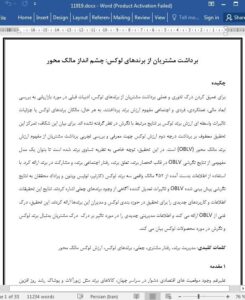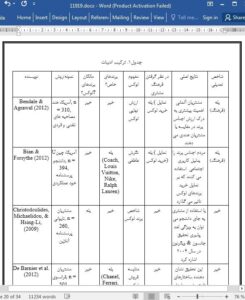Abstract
To deepen theoretical and practical understanding of consumers' perceptions of luxury brands, prior marketing literature has investigated the financial, functional, individual, and social dimensions of the luxury value construct. However, it has not considered the owners of luxury brands or detailed the moderated effects of luxury value on related attitudinal outcomes. To address this gap, this study draws on an existing second-order conceptualization of luxury value to introduce and empirically examine an extended conceptualization of the owner-based luxury value (OBLV) construct. The study draws on brand equity theory to offer a conceptual model of the attitudinal outcomes of OBLV in terms of brand loyalty, brand attachment, brand community behavior, and brand engagement. Using unique data from 452 actual owners of three luxury brands (Cartier, Louis Vuitton, and Prada), the authors confirm the predicted attitudinal outcomes of OBLV and reveal moderating effects of awareness of counterfeit existence. Their findings provide new insights and implications for luxury brand research and luxury brand managers. The research provides a richer understanding of OBLV and yields important managerial insights into how to influence luxury-seeking consumers' perceptions of, and attitudes to, luxury brands.
1. Introduction
Despite difficult global economic circumstances, personal luxury goods such as accessories and apparel show continued growth; the global market for personal luxury goods reached record revenues of $309 billion in 2017 and is expected to grow to $350 billion by 2020 (Bain & Co., 2017). This remarkable growth can be the consequence of globalization, wealth-creation opportunities, digital communications, international travel, and cultural convergence (Okonkwo, 2009). It also may be the result of social changes, such as the emergence of “masstige” (mass + prestige) brands that trigger both greater interest in luxury brands among average consumers (Gurzki & Woisetschläger, 2017; Silverstein & Fiske, 2008) and the democratization of luxury (Wong & Ahuvia, 1998), such that broad availability replaces exclusivity. Whatever the reason for the growth of the luxury goods market, to satisfy demands for luxury without threatening the uniqueness and exclusivity of luxury brands (Tynan, McKechnie, & Chhuon, 2010), luxury brand managers need to know what constitutes a luxury brand according to luxury-buying consumers. They need to be able to leverage, monitor, and preserve the value of luxury brands as perceived by those consumers. Scholars can assist luxury brand managers by developing and validating a robust measure of luxury value perception (Wiedmann et al., 2012).











